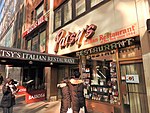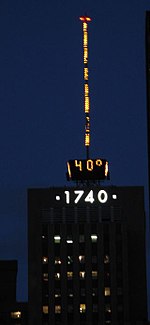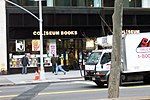Random House Tower
Apartment buildings in New York CityBroadway (Manhattan)Buildings and structures completed in 2003Mass media company headquarters in the United StatesMidtown Manhattan ... and 7 more
Penguin Random HouseRandom HouseResidential buildings completed in 2003Residential skyscrapers in ManhattanSkidmore, Owings & Merrill buildingsSkyscraper office buildings in ManhattanUse mdy dates from August 2020

The Random House Tower, also known as the Park Imperial Apartments, is a 52-story mixed-use tower in Manhattan, New York City. It is owned by real estate companies SL Green Realty and Ivanhoé Cambridge, with the office portion leased as the headquarters to book publisher Random House from the beginning and its parent company Penguin Random House (formed in 2013) since 2016, giving the building its name; a luxury apartment complex follows above the offices. The PRH entrance is on Broadway and goes up to 27 floors, while the apartment complex entrance is on West 56th Street. Rising to 684 ft (208 m), it is the 77th tallest building in New York City.
Excerpt from the Wikipedia article Random House Tower (License: CC BY-SA 3.0, Authors, Images).Random House Tower
Broadway, New York Manhattan
Geographical coordinates (GPS) Address External links Nearby Places Show on map
Geographical coordinates (GPS)
| Latitude | Longitude |
|---|---|
| N 40.765341 ° | E -73.982502 ° |
Address
Random House Tower (Park Imperial)
Broadway 1745
10019 New York, Manhattan
New York, United States
Open on Google Maps






